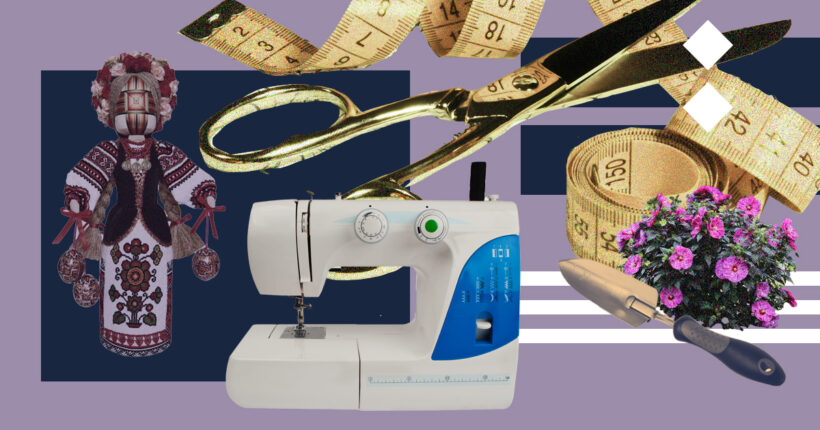
What is the problem?
The Ministry of Social Policy reported that 5 million internally displaced people [IDPs – ed.] had been registered in Ukraine as of March 2023. Still, the statistics suggest the number of unregistered refugees is actually closer to 7 million. Integration with their host communities is one of the main challenges they have to deal with.
What is the solution?
The nine years of war in Ukraine have shown that the integration process isn't just about its problems but also providing new possibilities. Immigrants bring knowledge, qualifications, ideas, enthusiasm for transformation, and more. This not only motivates newcomers but also encourages locals to take action.
In Berezhany, a city in the Ternopil region, IDPs from different parts of the south and east of Ukraine have collaborated to work on projects and endeavors that will benefit the community and its inhabitants. Last year, they founded the Berezhany Creative Hub NGO. Drawing on their own entrepreneurial experiences, the organization's members have implemented several important initiatives with the backing of the local authorities. One of their goals is to foster self-employment and job creation in Berezhany.
How does it work?
Berezhany unites
The Berezhany Creative Hub was started as an offshoot of the public organization "Bakhmat," that's existed since 1995. Nowadays, the Hub's got seventeen people as its team members. Most of them are IDPs coming from cities in the southeast of Ukraine. Every member of the team has a tough story. Someone lost their home or family members or had their property occupied and looted by the Russians. They overcame a difficult path, leaving their native homes and making critical, sometimes fateful, decisions for themselves and their families. And they found shelter here — in the Ternopil region.
The three founders of the new public organization were Viktor Hrubiak, Oleksandr Puntus, and Dmytro Petrovskyi — all of whom were IDPs. Before the war, they each had their own business. Viktor Hrubyak's agrarian enterprise was almost totally ruined during the occupation of the Kharkiv region. Dmytro is from Mykolaiv and is an experienced lawyer. Oleksandr is from the Luhansk region — he had to move to Kharkiv in 2014 and was a manufacturer of repair tools. Before the invasion, these entrepreneurs weren't acquainted but met in Berezhany at a meeting for IDPs.
One of the main focuses of the hub's activities is to help active migrants restore entrepreneurial activities among IDPs. The organization believes this will create jobs and increase revenues for the local budget. This organization's most significant project in this area is the Berezhany School-Atelier, where residents and IDPs can study together.The idea was implemented with investments from Europe — the Berezhany School-Atelier project is supported by the Citizenship for Democratization project, funded by the European Union, and the Institute of Economic Research and Political Consultations. The city council helped to find premises for the school.
New friends, new knowledge, new opportunities
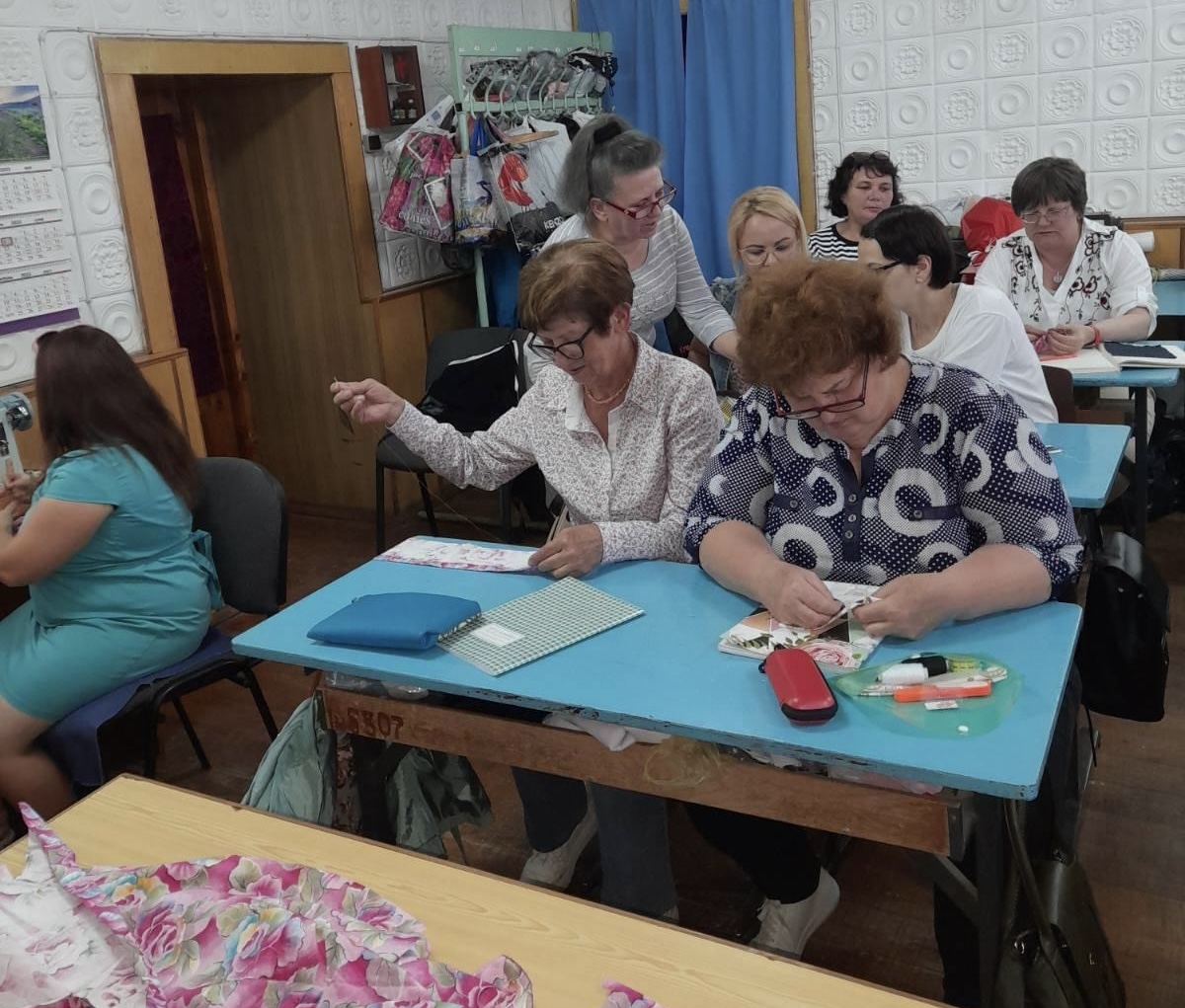
Lessons at the Berezhany School-Atelier
The three-month sewing and cutting course is open to anyone looking to get into the textile industry. The theory is being taught by Berezhany Agrotechnical Institute of the National University of Bioresources and Nature Management of Ukraine, with practical training on new computerized equipment purchased by the hub. IDPs who can't afford the school supplies needed for the class are given notebooks, scissors, etc. Right now, the second group is at the Berezhany School-Atelier. The first 12 students graduated this spring with diplomas for "Seamstress of the second class."
"Atelier school is not only about tailoring and modeling," says Oleksandr Puntus, co-founder of Creative Hub. "It's about understanding needs, volunteering, various excursions to active specialized enterprises, and even psychological support." Collaborating with other local businesses and public organizations on sewing courses also benefits the NGO.
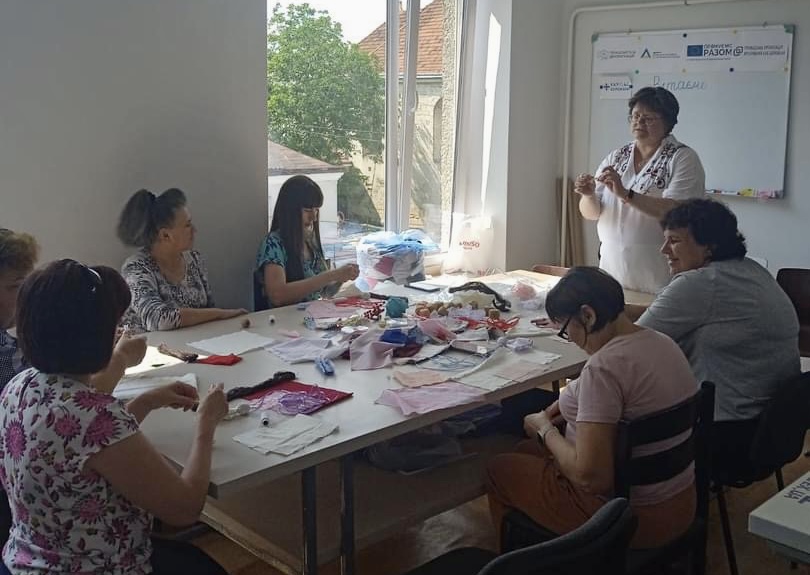
Oksana Muravliova is teaching a master class on dollmaking
For instance, at a masterclass on motanka doll-making [a traditional knotted doll made of fabric– ed.] led by Oksana Muravliova, the head of Ukrainian Conversational Club "Faino" NGO, students learned how to make a torokhtiyka doll. It was a really cool activity; it brought the girls to some ancient traditions and jumpstarted a big creative project– a Ukrainian map made of dolls.
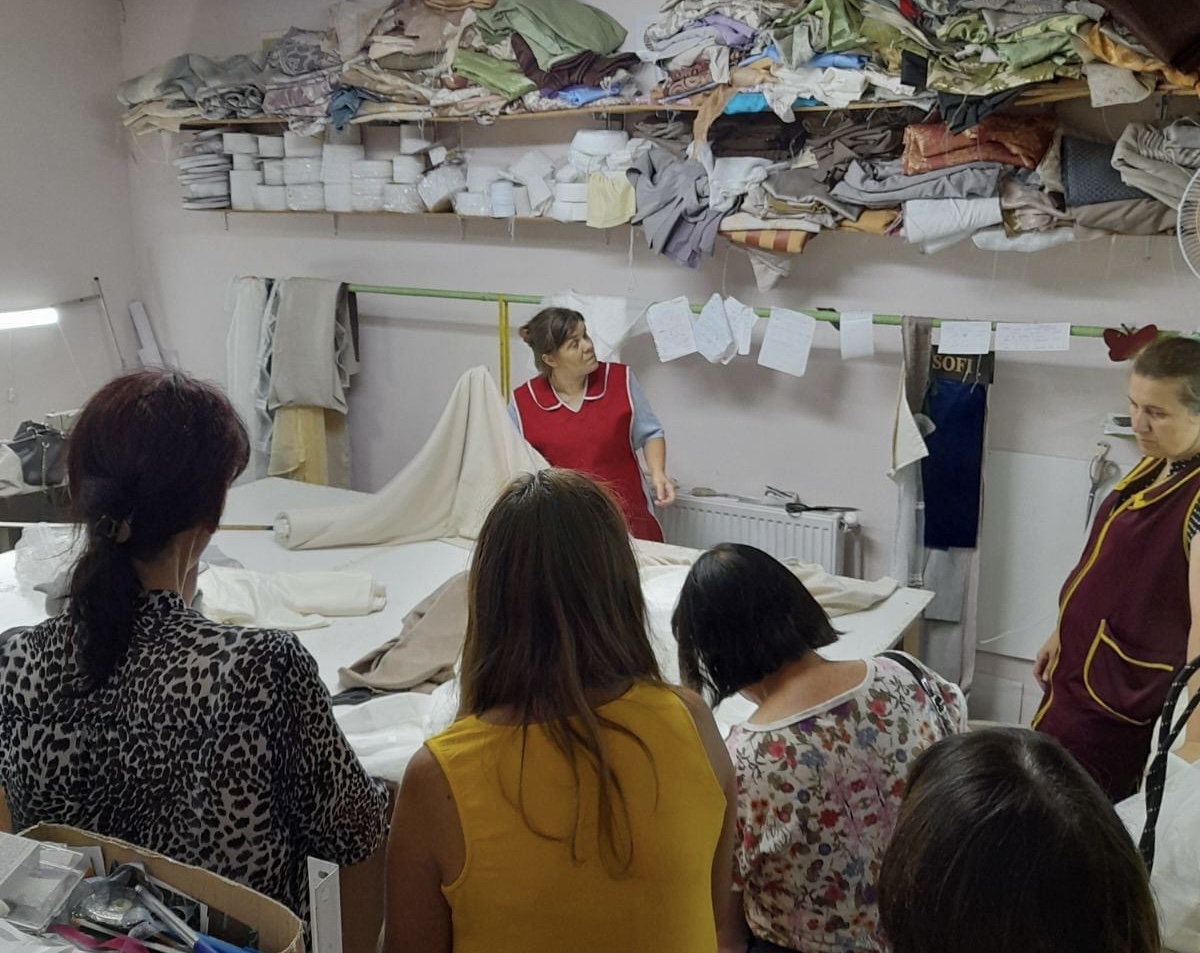
Excursion to the sewing factory
The students of the courses went on a trip to the "Studio Curtains" sewing factory, watched all the steps of making curtains and tulle, and even took part in the process themselves. Plus, they talked about ideas to start their own business.
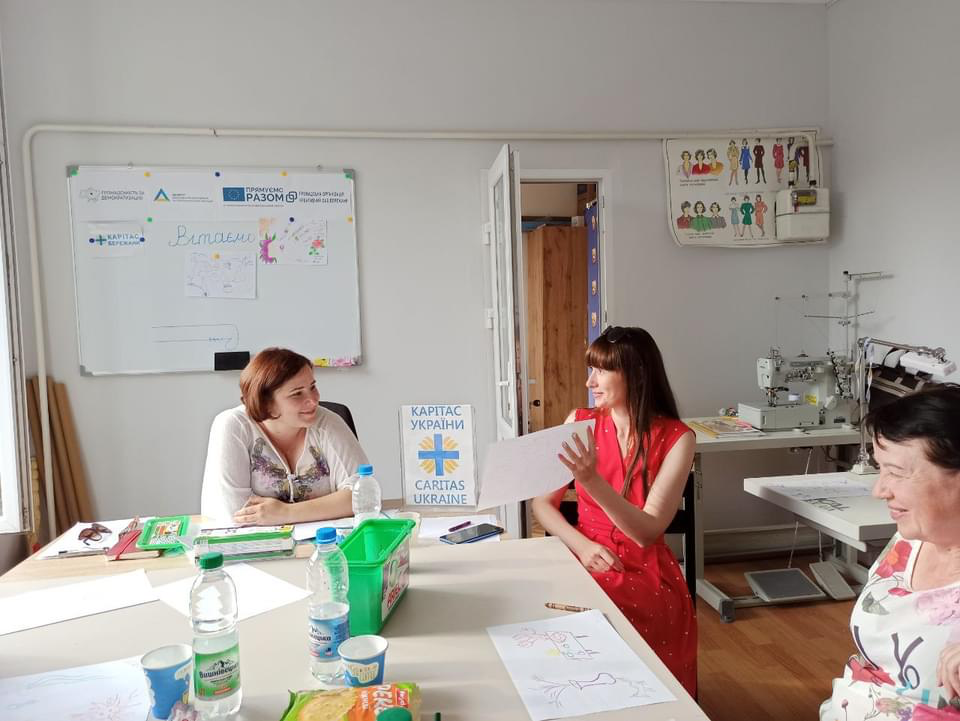
Psychologist Khrystyna Syvak conducts psychological training for future seamstresses
As part of the Berezhany School-Atelier project, the Caritas Berezhany charitable fund also runs psychological training sessions that focus on replenishing both inner and outer resources. During such sessions, the students go through artistic therapy exercises and discuss the results with psychologists to find ways to build up their energy.
Does it really work?
According to the experts' evaluations, in March 2023, the Berezhany School-Atelier project came 3rd in the "Project of the Year" nomination at the "Golden Flipchart" forum in Ternopil. Not only did the award bring joy to the organization, but the courses they offered gave the women an opportunity to change their lives and the life of their community.
Residents and internally displaced persons from Bakhmut, Kramatorsk, Yasynuvata, Luhansk, Sieverodonetsk, Kharkiv, Mykolaiv, Kyiv, and Zaporizhzhia had an excellent opportunity to try out exciting and useful cutting and sewing lessons. It was a perfect chance for women to find self-fulfillment. The NGO said that they should not be afraid to take this step, improve their skills, and develop, as these classes could be the start of something bigger and more rewarding in the future, both in terms of money and satisfaction from the work done.
For instance, Mykolaiv resettlers Olena and Alla — who graduated from the Berezhany School-Atelier – won grants from the YeRobota program, got individual entrepreneur status, and established their own tailoring shop in the community.
The 72-year-old student of the school, an IDP from Kharkiv, now calls frequently and is very thankful for the courses. When she first arrived, Nina Petrivna ["Petrivna" is a patronym — ed.] spent her days just sitting and staring out the window. The children got her a sewing machine; she now spends her spare time making trousers, dresses, and more. People even come to visit her to drink tea. She's always busy. She says the acquired skills gave her energy and opened a second wind — she feels like she's really part of the community now.
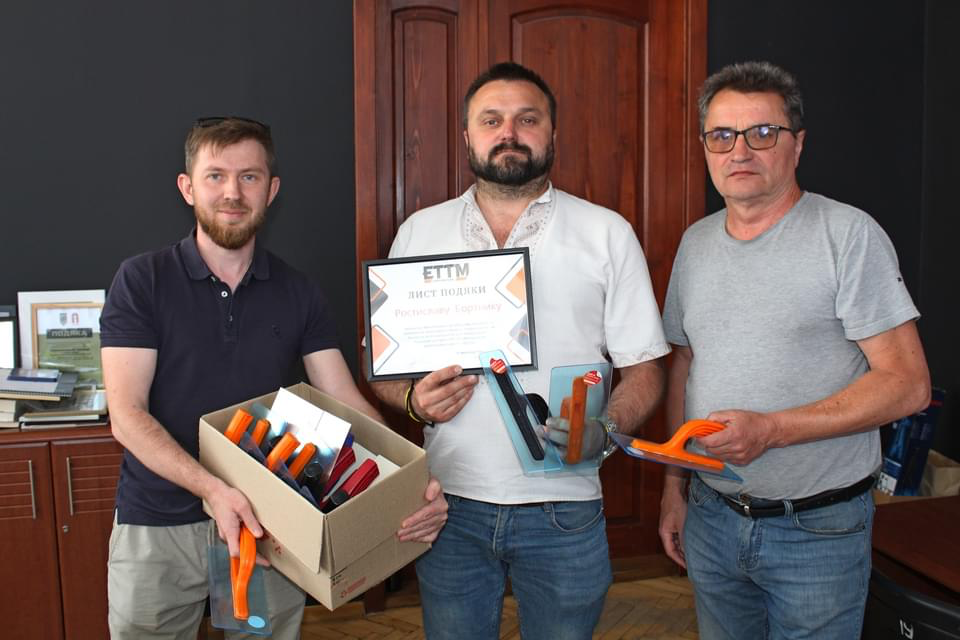
From left to right: Oleksandr Puntus, Mayor of Berezhany Rostyslav Bortnyk, Chairman of the Board of the Berezhany Creative Hub Viktor Hrubiak
"During the war, a certain number of people left the city, and probably the same number of people came. Having new people with different perspectives can provide a chance to look at issues from a different point of view. The community has rather gained more than lost with the new residents," says Mayor Rostyslav Bortnyk.
"We all yearn for a future with confidence. To live in an independent, sovereign state with peace in every family, children's smiles, and competitions only at the Olympics, not in the trenches, — adds Oleksandr Puntus. — This is our goal. Therefore, we strive towards Ukraine's triumph over Russia, creating new societal opportunities and encouraging all to work together."
Even more useful solutions!
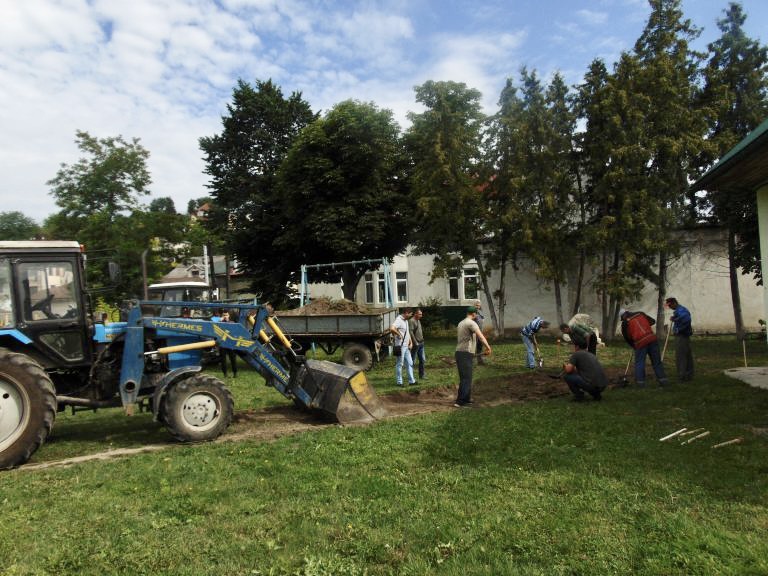
Work on modernizing children's playground in Berezhany
Berezhany Creative Hub continues to work for the community's benefit: it assists in writing grants (the result is ten grants from YeRobota and one international grant). It plans to create a shelter and a Center for Youth and Development. The NGO is currently looking for sponsors for these projects and for premises to house its headquarters — big plans require big steps.
Oleksandr Puntus, co-founder of the hub, remembers when they first started out: it was a small undertaking, restoring a playground for children in Berezhany. There weren't many playgrounds for the kids in the area, and all of them were rundown. The activists got support from the local council, and Oleh Priadko, who had moved from the Luhansk region, designed the children's play area.
Last year, cobblestone pathways, flower beds, and trees were added to the site. A total of more than 150 bushes and trees were planted. Hibiscus and Carpathian thuja were chosen for landscaping (the local agrotechnical institute helped with this) so that in a year or two, they would become a green wall and fence off the site from the road. This year, immigrants from Bakhmut took part by contributing sandboxes and swings, painting the slide, and installing benches.
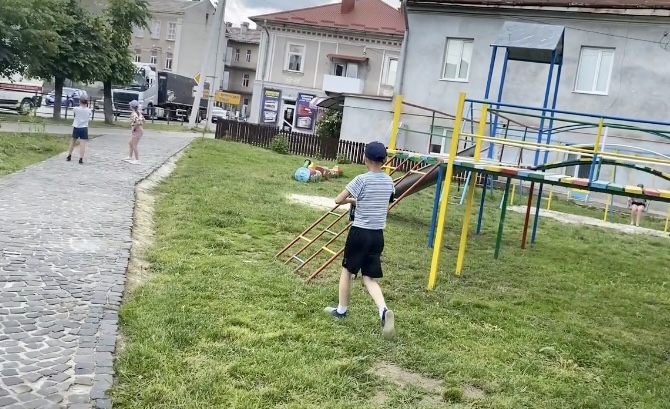
The hibiscus is already in bloom. Oleksandr, who is a young father himself, says that these hibiscuses offer comfort to those who had to leave their hometowns due to the war. The kids can play and have fun, while the adults can take their minds off of it all and be soothed by the pretty and calming flowers.
This article was published as part of the "Voice of Communities" campaign, which forms part of the "U-LEAD with Europe: Programme for Ukraine on Local Empowerment, Accountable Governance and Decentralised Development." This program is funded jointly by the European Union and its Member States of Germany, Poland, Sweden, Denmark, Estonia, and Slovenia as a means to support Ukraine in its pursuit of local self-governance. U-LEAD is designed to improve the transparency, accountability, and multi-level governance in Ukraine while also responding to the needs of its citizens and empowering those communities.







